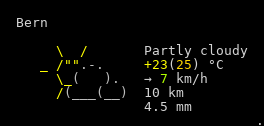Google Safe Browsing API
Google Safe Browsing API
Build a Post
The Google Safe Browsing API is a service that enables applications to check URLs against the Google’s lists of suspected phishing and postulated malware pages.


First you need an APIKey and an Enabler to this API otherwise:
GPost: Failed at getting response:403{
“error”: {
“code”: 403,
“message”: “Safe Browsing API has not been used in project 338972382324 before or it is disabled. Enable it by visiting https://console.developers.google.com/apis/api/safebrowsing.googleapis.com/overview?project=338972382324 then retry. If you enabled this API recently, wait a few minutes for the action to propagate to our systems and retry.”,
“status”: “PERMISSION_DENIED”,
“details”: [
{
“@type”: “type.googleapis.com/google.rpc.Help”,
“links”: [
{
“description”: “Google developers console API activation”,
“url”: “https://console.developers.google.com/apis/api/safebrowsing.googleapis.com/overview?project=338972382324”
}
]
},
{
“@type”: “type.googleapis.com/google.rpc.ErrorInfo”,
“reason”: “SERVICE_DISABLED”,
“domain”: “googleapis.com”,
“metadata”: {
“consumer”: “projects/338972382324”,
“service”: “safebrowsing.googleapis.com”
}
}
]
}
}


The response body includes the match information (the list names and the URLs found on those lists, the metadata, if available, and the cache durations). For more details, see the threatMatches.find response body and the explanations that follow the code example.
Note: If there are no matches (that is, if none of the URLs specified in the request are found on any of the lists specified in a request), the HTTP POST response simply returns an empty object in the response body.
1 2 3 4 5 6 7 8 9 10 11 12 13 14 15 16 17 18 19 20 21 22 23 24 25 26 27 28 29 30 31 32 33 34 35 36 37 38 39 40 41 42 43 44 45 46 47 48 49 50 51 52 53 54 55 56 57 58 59 60 61 62 63 64 65 66 | procedure setTestData;beginJTESTDATA:= '{ '+LF+ '"client": { '+LF+ ' "clientId": "TestClient4", '+LF+ ' "clientVersion": "1.1" '+LF+ '}, '+LF+ '"threatInfo": { '+LF+ ' "threatTypes": ["MALWARE", "SOCIAL_ENGINEERING"],'+LF+ ' "platformTypes": ["LINUX"], '+LF+ ' "threatEntryTypes": ["URL"], '+LF+ ' "threatEntries": [ '+LF+ ' {"url": "%s"} '+LF+ ' ] '+LF+ ' } '+LF+ '}';end;function getPostGoogleAPI(feedstream, aApikey, tolang: string): string;var Url,aAPI_KEY, source: string; jo, locate: TJSONObject; httpReq,hr: Olevariant; strm: TStringStream;begin //setTestData before; httpReq:= CreateOleObject('WinHttp.WinHttpRequest.5.1'); // Open the HTTPs connection. try hr:= httpReq.Open('POST', +aApikey, false); httpReq.setRequestheader('user-agent',SUSERAGENT ); httpReq.setRequestheader('content-type','application/json'); if hr= S_OK then HttpReq.Send(format(JTESTDATA,[feedstream])); //writeln(format(JTESTDATA,[feedstream])); If HttpReq.Status = 200 Then result:= HttpReq.responseText Else result:= 'Failed at getting response:'+itoa(HttpReq.Status)+HttpReq.responseText; //writeln('debug response '+HttpReq.GetAllResponseHeaders); finally httpreq:= unassigned; end; end; writeln('GPost: '+getPostGoogleAPI(URLMALWARE, GoogleApiKey,''));>>> GPost: { "matches": [ { "threatType": "MALWARE", "platformType": "LINUX", "threat": { }, "cacheDuration": "300s", "threatEntryType": "URL" } ]}{"client":{"clientId":"TestClient4","clientVersion":"1.1"},"threatInfo":{"threatTypes":["MALWARE","SOCIAL_ENGINEERING"],"platformTypes":["LINUX"],"threatEntryTypes":["URL"],"threatEntries":[{"url":"%s"}]}}GPost: {} |
Early binding with ALHTTPClient
http://www.softwareschule.ch/examples/alhttpclient2.txt
The matches object lists the names of the Safe Browsing
lists and the URLs—if there is match. In the example, two URLs
(urltocheck1.org and urltocheck2.org) were found on one of the Safe
Browsing lists (MALWARE/WINDOWS/URL) so the matching information is
returned. The third URL (urltocheck3.org) was not found on either list,
so no information is returned for this URL postulate:
1 2 3 4 5 6 7 8 9 10 11 12 13 14 15 16 17 18 19 20 21 22 23 24 25 26 27 28 29 30 31 32 33 34 35 36 37 38 39 40 | function TALHTTPClient_Post5GoogleAPI(aUrl: AnsiString; feedstream, aapiKey: string; aResponseContentStream:TStream; aResponseContentHeader:TALHTTPResponseHeader):string;Var FRequestHeader: TALHTTPRequestHeader; aPoststream: TStream;begin with TALWininetHttpClient.create do begin Url:= aURL + aApikey; RequestMethod:= HTTPmt_Post; //HTTPrm_Post; RequestHeader.UserAgent:= SUSERAGENT; RequestHeader.ContentType:= 'application/json'; //LHttpClient.RequestHeader.RawHeaderText:=' try aPoststream:= TStringStream.create(format(JTESTDATA,[feedstream])); result:= Post3(Url, aPoststream); //overload; finally Free; aPostStream.Free; end; end; //with end; writeln('GPost2: '+ TALHTTPClient_Post5GoogleAPI(URL_SAFEBROWSING,URLMALWARE,GoogleApiKey, Nil, Nil));>>> GPost2: { "matches": [ { "threatType": "MALWARE", "platformType": "LINUX", "threat": { }, "cacheDuration": "300s", "threatEntryType": "URL" } ]} |
Metadata
The threatEntryMetadata field is optional and provides
additional information about the threat match. Currently, metadata is
available for the MALWARE/WINDOWS/URL Safe Browsing list (see Metadata).
Cache durations
The cacheDuration field indicates the amount of time the URL must be considered unsafe (see Caching).


Comments
Post a Comment